Stories of CDC's Work Around the World
 Strengthening Laboratory Services and Systems in the Caribbean Region
Strengthening Laboratory Services and Systems in the Caribbean Region
A strong national public health laboratory system is essential for detecting and responding effectively to HIV and other diseases...
Posted September 13, 2012
 Building to Last: CDC Partner Leaves Proud Legacy in South Africa
Building to Last: CDC Partner Leaves Proud Legacy in South Africa
On a sweltering February day in East London (affectionately known as Buffalo City) in the Eastern Cape province of South Africa, representatives from the regional South African government...
Posted August 4, 2012
 Strengthening the African Health Workforce
Strengthening the African Health Workforce
In response, CDC launched a four-year initiative, the African Health Profession Regulatory Collaborative for Nurses and Midwives (ARC), that builds the capacity of nursing and midwifery regulatory councils in east, central and southern Africa.
Posted September 13, 2012
 Uganda Blood Transfusion Service Headquarters
Uganda Blood Transfusion Service Headquarters
In the early years of the global HIV/AIDS epidemic, a safe blood supply was a critical concern for stopping the transmission of HIV for developed and developing countries alike.
Posted April 17, 2012
 Laboratory Accreditation Program to Strengthen Health Systems
Laboratory Accreditation Program to Strengthen Health Systems
On July 27, 2009, in Kigali, Rwanda, with critical support from CDC's Division of Global HIV/AIDS, 140 host government laboratory personnel, health experts and policymakers from 12 African countries...
Posted August 4, 2012
 Public-Private Partnership Strengthens Global Laboratory Systems
Public-Private Partnership Strengthens Global Laboratory Systems
Deficiencies in the health care systems in most countries supported by the U.S. President’s Emergency Plan for AIDS Relief (PEPFAR) are enormous, and no single entity...
Posted August 4, 2012
 Improving Blood Safety in Uganda
Improving Blood Safety in Uganda
In the early years of the global HIV/AIDS epidemic, a safe blood supply was a critical concern for stopping the transmission of HIV for developed and developing countries alike...
Posted August 4, 2012
 Siyayinqoba: Beat It! Conquers Fear of HIV Testing
Siyayinqoba: Beat It! Conquers Fear of HIV Testing
Siyayinqoba Beat It!, a South African magazine show produced by the Community Health Media Trust (CMT) discusses hard-hitting topics about people living with HIV...
Posted August 2, 2012
 CDC Meets With African Countries to Discuss Influenza Surveillance
CDC Meets With African Countries to Discuss Influenza Surveillance
CDC influenza representatives met with experts from twenty-three African countries to discuss their influenza surveillance achievements. As a next step, the group is looking forward to publishing an article highlighting fifty years of influenza surveillance in Africa......
Posted February 15, 2012
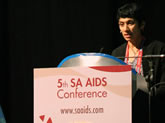 PMTCT: A Winnable Battle in South Africa
PMTCT: A Winnable Battle in South Africa
At the 5th South African AIDS Conference in June in Durban, South Africa, South African and CDC researchers presented on new evidence that the country is winning the fight against the HIV and AIDS epidemic. According to their national survey results, the mother-to-child HIV transmission (MTCT) rate for HIV is 3.5% and virtually eliminating this form of HIV transmission is therefore within reach by 2015 with intensified efforts...
Posted December 5, 2011
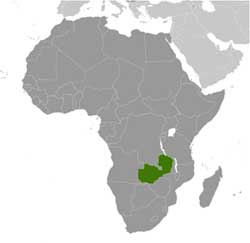 Director of Center for Global Health visits CDC-Zambia
Director of Center for Global Health visits CDC-Zambia
On October 31-November 2, 2011, Dr. Kevin De Cock, Director, Center for Global Health, visits CDC-Zambia offices to meet with Zambia Minister of Health, U.S. Ambassador in Zambia, and CDC partners in-country. As part of his visit, Dr. Kevin De Cock, presented “Global Health 2012” at Grand Rounds at the University Teaching Hospital in Lusaka, Zambia. For a summary of his remarks...
Posted November 6, 2011
 Providing Treatment for Migrants in South Africa - Community AIDS Response works with the most needy at Johannesburg Central Methodist Church
Providing Treatment for Migrants in South Africa - Community AIDS Response works with the most needy at Johannesburg Central Methodist Church
The Johannesburg Central Methodist Church sits amid thriving businesses and skyscrapers in the city’s bustling downtown. The church is both a place of refuge and a place of controversy...
Posted October 6, 2011
 SANBS South African Transfusion Medicine Training Center
SANBS South African Transfusion Medicine Training Center
In February 2010, South Africa’s blood safety services took a major step forward with the opening of the technologically advanced South African Transfusion Medicine Training Center in Johannesburg. Funded by PEPFAR through CDC South Africa, the training center features lecture rooms, video conferencing, training laboratories for technical and donor training, and a unique distance learning training center...
Posted october 6, 2011
 Lillian and Baby Rose: An HIV-Positive Mother Gets Help From CDC
Lillian and Baby Rose: An HIV-Positive Mother Gets Help From CDC
Lillian, a 20-year-old mom living in rural Nyanza province, first met Dr. Abraham Katana during her first antenatal visit at the Siaya District Hospital. She was five months pregnant and just learning she was HIV-positive...
Posted october 5, 2011
 Passionate Volunteers Take HIV Prevention to Their Neighbors in Namibia
Passionate Volunteers Take HIV Prevention to Their Neighbors in Namibia
A blanket of yellow eshosholo flowers covers the hillside neighborhood where Elizabeth Eichas and her husband make their home. The flowers are a bright, hopeful reminder of Namibia’s long rainy season. From her hilltop home, Eichas, who is HIV positive, spreads a different kind of hope...
Posted September 22, 2011
 Saving Lives and Protecting People in Nigeria
Saving Lives and Protecting People in Nigeria
As a recent graduate of Kenya’s Field Epidemiology and Laboratory Training Program (FELTP), Dr. Nguku was sent to Nigeria when the first human case of influenza A H5N1 virus was reported in Africa in 2006. In Nigeria, he was part of a team that helped track down the cause of the outbreak. The joint efforts by the human and animal health ministries of Nigeria in combating influenza A H5N1 lead to the realization that closer collaborations were required in zoonotic diseases control, thereby leading to among other things, creation of Nigeria's own FELTP program...
Posted September 22, 2011
 Addressing Noncommunicable Diseases in China
Addressing Noncommunicable Diseases in China
Global health is now facing a dramatic transition. For the first time in human history, around the world more people are overweight than underweight, and more deaths occur among adults than children...
Posted September 16, 2011
 Improving the Lives of Children in Kenya
Improving the Lives of Children in Kenya
In April 2011, Everline, a resident of the Kibera community in Kenya, was approached by a community mobilizer. Talking with him was normal to her, but this time the information he had was different. He came to talk to her about a seasonal flu vaccine study that was being carried out by KEMRI/CDC...
Posted August 29, 2011
 Using U.S. Strength to Make a Difference in the Lives of Children
Using U.S. Strength to Make a Difference in the Lives of Children
When Zara Ahmed and her U.S. Government colleagues began reviewing high-priority needs to be included in Rwanda’s Global Health Initiative Strategy, they did not know they would end up developing an innovative partnership...
Posted August 16, 2011
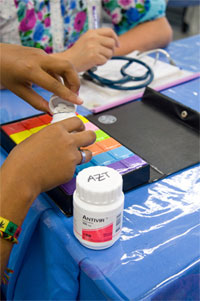 Pediatric HIV Network Reaches Thai Citizens with a Message of Hope
Pediatric HIV Network Reaches Thai Citizens with a Message of Hope
In 2005, Nantikan, then eight years old, developed a rash. For many caregivers, a rash would not inspire panic, but Nantikan’s aunt and primary caregiver, Kulton, recognized its importance. “Nantikan’s sister died, then six months later her mother died, so we thought it would be important to have her tested,” said Kulton. “I thought she might have HIV.”
Posted August 16, 2011
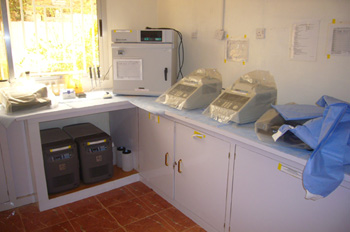 Sierra Leone: A Symbol of a Healthier Future
Sierra Leone: A Symbol of a Healthier Future
Opening a laboratory is rarely accomplished in one year’s time. In a country like Sierra Leone, which is still recovering from a decade-long civil war, it is even more difficult. But over the past year, CDC, the Sierra Leone Ministry of Health, and a host of global health partners have managed to do just that...
Posted August 15, 2011
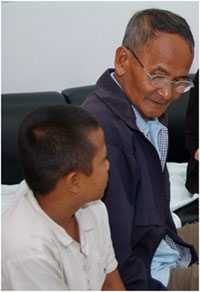 A New Model of Care for Children
A New Model of Care for Children
In a small, brightly colored room, a young boy sits at a table, drawing a picture. A woman sits nearby, pointing out shapes in the drawing and asking the child questions.
The situation would be familiar at nearly any daycare facility around the world. But in many hospitals in Thailand, the scene also now includes a new model of pediatric HIV counseling...
Posted August 15, 2011
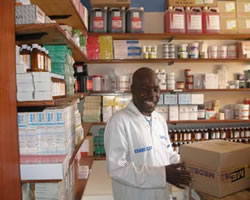 A Pharmacist Motivated by Inspirational Women
A Pharmacist Motivated by Inspirational Women
Fredrick Ochenge moves quickly and efficiently around Tabitha clinic's small pharmacy, filling up bottles, counting out pills, and chatting happily with everyone he encounters. When he calls a patient's name, they are met at the dispensary window by his wide smile and a warm greeting, as he carefully explains each medication's use, dose, and precautions. It is instantly clear to all who meet him: this is not your typical pharmacist...
Posted August 11, 2011
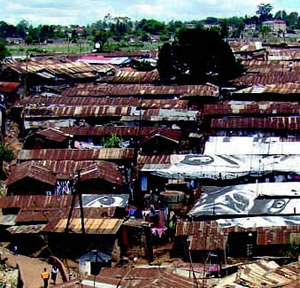 A Promising New Career in the Slums of Kibera
A Promising New Career in the Slums of Kibera
It has been six years, but Kennedy Odero can still remember perfectly the day he first crossed paths with CDC-Kenya. 'I was attending a local church function, and I heard an announcement that the CDC was looking for people to train as community health workers,' recalls Odero. 'At the time, I had another job, but it was not utilizing my skills appropriately.' ...
Posted August 11, 2011
 Coordinated Campaign Against Nodding Syndrome in Uganda
Coordinated Campaign Against Nodding Syndrome in Uganda
Since the early 1960s, there have been reports of a mysterious disease affecting children in Africa, which causes uncontrolled head nodding (particularly in the presence of food), seizure-like activity, and in many cases, death. This illness is referred to as “Nodding Syndrome” after its most notable symptom. In late 2009, reports from Northern Uganda suggested that over 2,000 children were afflicted with this unusual illness…
Posted June 24, 2011
 The Snowball Effect—Battling Malaria on a Global Stage
The Snowball Effect—Battling Malaria on a Global Stage
In a district hospital in western Kenya, more than 200 mothers and children crowd into a small room, hoping to be seen by the hospital's one outpatient healthcare worker. Inside the hospital is an even bleaker scene. Two, three, or even four seriously ill children lie piled on a single hospital bed. When the nurses prick their small arms to give them transfusions or medicine, their blood is pale pink instead of a healthy red, destroyed by the malaria parasites that have feasted on their tiny bodies…
Posted June 22, 2011
 From Epidemic to Elimination—Ending Epidemic Meningitis in Sub-Saharan Africa
From Epidemic to Elimination—Ending Epidemic Meningitis in Sub-Saharan Africa
"It takes a village to protect a village." For Dr. Thomas A. Clark, epidemiology lead for CDC's Meningitis and Vaccine Preventable Diseases Branch, these are words to live by, especially in Sub-Saharan Africa, which suffers from what he calls "the one-hundred-year-old problem" of meningitis. The region has long been hit by what he calls "explosive epidemics" of the disease, which can lead to death or cause life-long disabilities such as deafness. In 1996 alone, 200,000 meningitis cases were reported in Africa…
Posted June 22, 2011
 Improving Health for Kenya’s Refugees by Building Laboratory Capacity
Improving Health for Kenya’s Refugees by Building Laboratory Capacity
Not far from the Somalia border in Kenya lies the town of Dadaab, home to over 300,000 refugees in what is the largest refugee camp in the world. Refugees travel long distances, often by foot, without adequate food, water, sanitation, or shelter. They are faced with a host of medical problems which are compounded by the overcrowded conditions and limited access to care in the camps where they live. It is easy for infectious diseases to spread quickly in such conditions. In 2010, the Centers for Disease Control and Prevention (CDC) Division of Global Migration and Quarantine (DGMQ) responded to nine disease outbreaks in the Dadaab Refugee Camp, including cholera, H1N1 flu, measles, meningitis, and pertussis…
Posted March 9, 2011
 CDC and partners are “doggedly dedicated” to eradicating polio
CDC and partners are “doggedly dedicated” to eradicating polio
The global effort to eradicate polio is the largest public health initiative in history. Since 1988, CDC has contributed to global efforts to eradicate the disease and strengthen the capacity of countries to control other deadly and debilitating childhood diseases. At the 126th Session of the Executive Board of the World Health Assembly in January 2010, delegates committed to finishing the job of polio eradication by the end of 2012…
Posted March 8, 2011
 One Woman, One Community, Many Gains
One Woman, One Community, Many Gains
Jemima is a woman living with HIV in rural western Kenya. That, alone, does not make her unique. After all, rates of HIV in that region are among the highest in the world. Even so, Jemima set aside worries about her own infection and went to work. A go-getter, she founded a group in her community that offers emotional support and small loans to families touched by HIV…
Posted March 1, 2011
 Laboratory Accreditation Program to Strengthen Health Systems
Laboratory Accreditation Program to Strengthen Health Systems
On July 27, 2009, in Kigali, Rwanda, with critical support from the CDC Global AIDS Program, 140 host government laboratory personnel, health experts and policymakers from 12 African countries launched the first-ever World Health Organization (WHO) AFRO -accreditation program…
Posted August 4, 2010
 Public-Private Partnership Strengthens Global Laboratory Systems
Public-Private Partnership Strengthens Global Laboratory Systems
Deficiencies in the health care systems in most countries supported by the President’s Emergency Plan for AIDS Relief (PEPFAR) are enormous, and no single entity – neither governmental and non-governmental organizations nor industry – can meet these challenges alone...
Posted August 4, 2010
 Improving Blood Safety in Uganda
Improving Blood Safety in Uganda
In the early years of the global HIV/AIDS epidemic, a safe blood supply was a critical concern for stopping the transmission of HIV for developed and developing countries alike. Over the years great strides have been made in improving blood safety, but it continues to be an ongoing challenge in developing countries...
Posted August 4, 2010
 A Cautionary Tale: A Family's Ordeal with Malaria
A Cautionary Tale: A Family's Ordeal with Malaria
Fatai and Hanifat Adisa and their baby Mariam moved from Nigeria to the United States 10 years ago...
Posted February 8, 2010
 More Than Just 'Jet Lag'
More Than Just 'Jet Lag'
Kelly Granger in Ghana with her djembe, a traditional Ghanian drum made from carved wood and goatskin...
Posted February 8, 2010
 A Cautionary Tale: One Traveler's Ordeal with Severe Malaria
A Cautionary Tale: One Traveler's Ordeal with Severe Malaria
Mr. Ver Wys was returning home after spending three weeks in Haiti working for Friend Ships, a humanitarian group based at Port Mercy in Lake Charles...
Posted February 8, 2010
 A Cautionary Tale: Pregnancy, Travel and Malaria
A Cautionary Tale: Pregnancy, Travel and Malaria
In June 2005, Mariama Jones was living in a comfortable house in Lawrenceville, Georgia, near Atlanta, with her husband Samuel, 10-year-old son Ahmed, and 2-year-old daughter Sonya...
Posted February 8, 2010
 Malaria Visits a Child in Africa
Malaria Visits a Child in Africa
The child in this story (Courtesy: The Ifakara Health Research and Development Centre and the Rufiji District Council Health Management Team, Tanzania)
...
Posted February 8, 2010
 A Cautionary Tale: The Risks of Unproven Antimalarials
A Cautionary Tale: The Risks of Unproven Antimalarials
Tom Miller has made several trips for missionary and medical purposes over the last 25 years to countries such as Kenya, Haiti, Peru and Russia...
Posted February 8, 2010
Get email updates
To receive email updates about the Global Health site, enter your email address:


